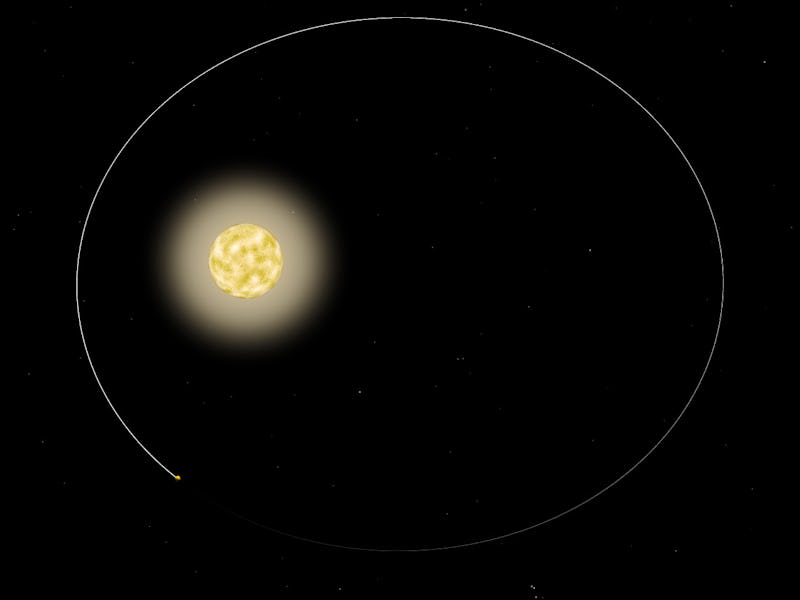About 400 light-years away, a gas giant planet and its host star are in the midst of a passionate celestial relationship. When the planet cruises nearby, it excites the star — but perhaps not in the most positive way.
The planet, called HAT-P-2b, has one crazy orbit. It swings close to the star, then flings itself far out before circling back. And when it’s near the star, there’s some strange turmoil. In a study published Tuesday in Astrophysical Journal Letters, an international team of researchers found, for the first time, a star was pulsing in response to its orbiting planet.
“At this stage, we know these oscillations are coming from the planet,” Julien de Wit, a postdoc in MIT’s Department of Earth, Atmospheric and Planetary Sciences, tells Inverse. “We’re going to need more information to find out about the processes that cause the planet to excite the star.”
HAT-P-2b has an eccentric orbit around its host star, swinging close to the star and then flinging itself far out.
Using NASA’s Spitzer Space Telescope, the research team spent more than 350 hours from July 2011 to November 2015 observing this star, called HAT-P-2. It found that the star’s brightness seems to oscillate about every hour and a half. Not only does the star shower the planet with heat and energy when it’s close by, it also pulsates in response.
They believe it’s because HAT-P-2b is so large — in fact, eight times larger than Jupiter — that it causes the star’s surface to periodically flare. One possible reason behind the star’s excitement is the planet’s gravitational pull is strong enough to impact the star.
“There is something that we cannot explain in our understanding of planet and star interactions is incomplete,” de Wit says. “We have to gather more information to understand this.”
Initially, researchers were studying HAT-P-2b’s temperature distribution as it orbits the star, but then they found the host star pulsating in response to the planet. With such an eccentric orbit, HAT-P-2b has two extreme seasons — very cold when it’s distant, and scorching hot when it sails close to the star and rekindles their flame.
“We were surprised because we weren’t expecting anything like that,” de Wit says. “We were looking for something completely different.”
Using data from the telescope, researchers focused on when the planet was closest to the star and measured the star’s brightness to measure the energy it transferred to HAT-P-2b. When HAT-P-2b passed behind the star, they found unusual oscillations in the star’s light that synced with HAT-P-2b’s orbit.
These findings could also lead to new techniques for detecting planets with eccentric orbits. Scientists still aren’t completely sure what causes this special relationship between planet and star, but they plan to continue investigating why the star beats for this planet. But meanwhile, you can say it’s complicated.
